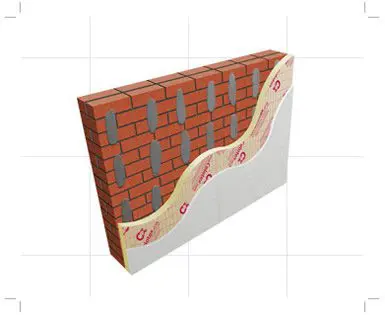India is a tropical country, where temperatures in the plains soar up to several degrees, causing discomfort to living conditions. We want larger windows for scenic views and for optimum daylight, but that brings in a lot of unwanted heat with itself.
We might wish to have dark coloured interiors, but that would mean heat absorption and retention. In short, our homes and thus our living is greatly affected due all that extra heat we wish to get rid of.

Is there A Solution?
Yes, there is. Thermal insulation of our houses, to a considerable extent, can save us from the ill-effects of all the unwanted heat from outside, and make living conditions much more comfortable. In the west, thermal insulation is provided for retaining heat, while in countries like India, thermal insulation prevents undesirable heat from entering and heating our houses. Let us have a better look at the latter of the two.
What is Thermal Insulation?
Thermal insulation refers to the provisions or constructions employed to reduce the transfer of heat into or out of the building. It helps to keep the house warm in winters and cool in summers, exactly what is desirable. In short, thermal insulation techniques help in keeping the indoors of a house independent of the outdoors.

Some Heat Insulation Materials
Insulating materials may be chiefly classified into slab/ block type, Reflective and Bat sheet type, Insulating boards, lightweight materials, loose fill insulation and blanket insulation. Several insulating materials have proved to be effective when it comes to thermal insulation of homes. Some of them are rock wool, slag wool, mineral wool, aluminium foils, gypsum boards, clip board, asbestos cement board, and ACC cement board and so on.
Heat Insulation of Your Home
Let us now have a brief look at individual components in our houses, which need to be effectively insulated against heat for a comfortable living experience. Heat Insulation of Roofs

Through application of insulating materials
With the provision of a heat insulating material above the water proof course of a roof, thermal insulation of the indoor spaces is ensured to some extent. Besides external application, internal insulation is also possible, either by application of an insulating material on the ceiling, or by the use of false ceilings in construction.
Flat roofs may be insulated with the help of asbestos cement (AC) sheets or galvanised iron (GI) sheets. The roof may be covered with 2.5 cm thick layer of coconut pitch cement concrete.
Splaying with water
It is a common practice in Indian homes to flood or splay the roof or terrace with water. It is a very easy method to bring down temperatures on a sultry afternoon, and requires negligible cost.

Heat Insulation of Exposed walls
- By increasing the wall thickness
- By applying cavity wall construction for external walls
- By using any of the several heat insulating materials mentioned above
- By providing light coloured distemper or whitewash on the exposed side of the wall

Heat Insulation Of Exposed Doors and Windows
- By providing external shading in the form of louvers and shutters, sun breakers and chajjas.
- By providing internal shading in the form of curtains and blinds
- By providing special insulating glass for glazing of windows, doors and walls
- By providing double glass layer with a cavity between or other such suitable means.

What are some general Methods of Insulation
Orientation
The building orientation, that is, its positioning with respect to the four cardinal directions is of utmost importance in the thermal insulation of a building.
Thermal behaviour depends largely on the orientation of a house, because it determines not just the effect of the sun path on the building, both daily and annually, but also determines the wind direction and flow which is crucial for the cooling down or heating up of a house.
Usually, the north and south sides are considered fine for windows and openings. Those on the East and West facade should be avoided.

Shading
Shading of the house, be it through trees and landscape, or through external and internal devices, helps in bringing down the surface temperatures considerably. However, this becomes difficult to achieve with differing altitude angles of the sun.
Height of Ceiling
Long wave radiations can cause more heat build up than shorter ones. With the provision of higher roofs, we are cutting down the long wave radiations from reaching the floor, thus providing an effective solution to heating up of interiors.

Advantages of Thermal Insulation
- Adds a whole lot of comfort to your living conditions. Keeps the house warm during winters and cool during summers
- A great means of cutting down on fuel consumption through ACs and coolers
- Helps in the prevention of condensation
– Sourav Suman





